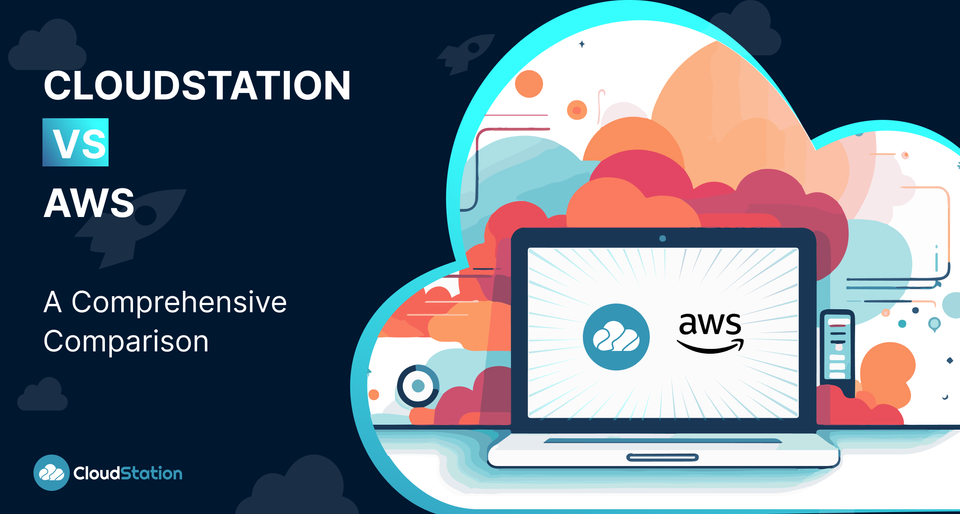CloudStation vs AWS

When it comes to selecting a web deployment platform, developers have a myriad of choices. Two popular options are CloudStation and Amazon Web Services (AWS). This blog post will explore the fundamental distinctions between these two platforms, focusing on their strengths and best use cases.
Deployment Focus
- CloudStation: CloudStation excels in full-stack deployment capabilities, offering a robust environment that supports both front-end and back-end services within a unified framework.
- AWS: In contrast, AWS is highly modular and versatile, allowing developers to selectively use services that fit their needs—be it deploying static websites, complex back-end systems, or serverless applications.
Database Support
- CloudStation: CloudStation comes with built-in database offerings that are seamlessly integrated into its ecosystem, simplifying database management.
- AWS: AWS offers a plethora of database options, ranging from managed services like RDS and DynamoDB to self-managed databases on EC2 instances. This provides flexibility but also requires more configuration.
Microservices Architecture
- CloudStation: CloudStation supports Docker, monorepos, and independent service deployments, making it easier to manage microservices.
- AWS: AWS has extensive support for microservices through services like ECS, EKS, and Lambda, though it may require a more complex setup compared to CloudStation.
Persistent Storage
- CloudStation: Includes persistent storage volumes as part of its offerings, making stateful applications easier to manage.
- AWS: AWS primarily offers stateless storage solutions through services like S3, although persistent storage can be configured via EBS for EC2 instances.
Pricing Structure
- CloudStation: Operates on a pay-as-you-go model, providing flexibility in cost management.
- AWS: Uses a tier-based pricing model with a free tier for new users, but costs can quickly add up as you scale.
Horizontal Scaling
- CloudStation: Offers horizontal scaling across all plans, enabling applications to handle traffic spikes effortlessly.
- AWS: AWS's Auto Scaling features are powerful but come with additional costs as you scale up.
Global Deployments
- CloudStation: Provides multiple global deployment locations, enhancing performance and reliability across regions.
- AWS: AWS also offers extensive global deployment options but may require more configuration to leverage all benefits.
Private Network and Service Discovery
- CloudStation: Features built-in service discovery and encrypted inter-service communications, ensuring secure networking.
- AWS: Offers private networking options through VPCs and service discovery via Route 53, but at an additional cost.
Autohealing
- CloudStation: Comes with automatic health checks and respawning features to maintain application uptime.
- AWS: AWS provides similar health management features but often requires additional service configurations and costs.
Multicloud Support
- CloudStation: Adopts a cloud-agnostic approach, allowing deployments across multiple cloud platforms for redundancy and flexibility.
- AWS: AWS is primarily confined to its cloud, limiting multicloud deployments.
Data Residency and Compliance
- CloudStation: Supports multi-region deployments to meet various data residency and compliance requirements.
- AWS: Offers robust compliance features but may require navigating a complex set of options and configurations.
Conclusion
Both CloudStation and AWS offer robust features for web deployment, each with its unique strengths. Developers should consider their project scale, deployment needs, and feature requirements when making a decision.
FAQs
Q: Which platform is better for a small startup?
- A: CloudStation might be more beneficial for small startups due to its simpler pricing model and built-in features.
Q: Can I use my own database with CloudStation?
- A: Yes, though CloudStation also offers built-in database support for ease of use.
